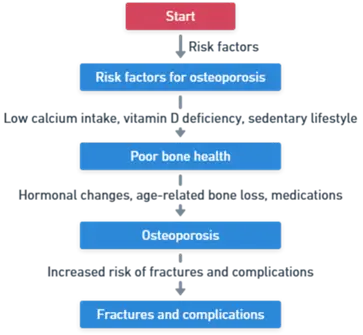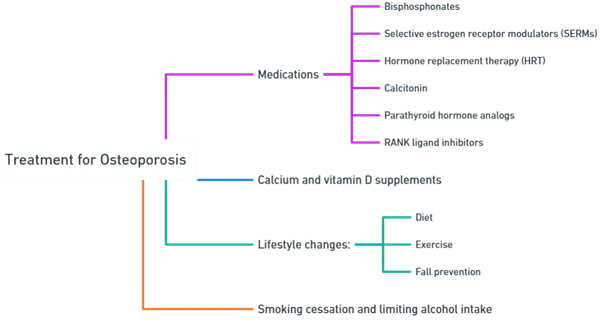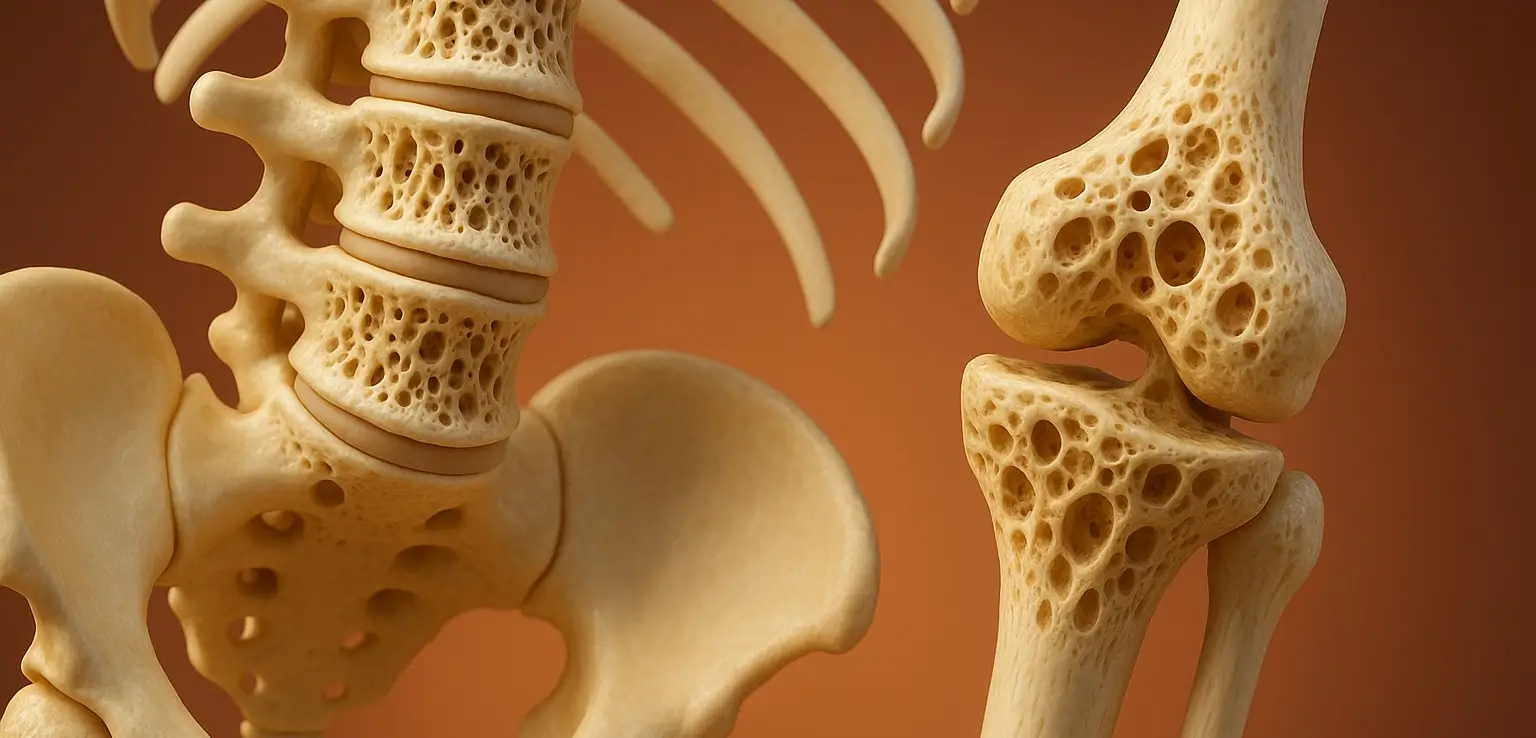- Osteoporosis is a condition characterized by weakened bones, increasing the risk of fractures.
- It occurs when the creation of new bone doesn’t keep up with the removal of old bone.
- This leads to bones becoming porous and fragile.

Overview of Osteoporosis:
- It is a bone disease characterized by low bone mass and deterioration of bone tissue, leading to increased fragility and risk of fractures.
- It is often referred to as a “silent disease” because it typically progresses without symptoms until a fracture occurs.
Symptoms of Osteoporosis:
- Osteoporosis itself does not cause symptoms until a bone fracture occurs.
- Common symptoms and signs associated with fractures due to osteoporosis include:
- Back pain, caused by a fractured or collapsed vertebra
- Loss of height over time
- A stooped posture
- Fractures of the hip, wrist, or spine that occur more easily than expected
Etiology
- Several factors contribute to the development of osteoporosis, including:
- Age – Bone density naturally decreases with age.
- Gender – Women are more likely to develop osteoporosis, especially postmenopausal women due to a decrease in estrogen levels.
- Genetics – A family history of osteoporosis can increase risk.
- Hormonal imbalances – Low levels of sex hormones (estrogen in women and testosterone in men) can lead to bone loss.
- Nutritional factors – A diet low in calcium and vitamin D can contribute to weaker bones.
- Lifestyle factors – Sedentary lifestyle, excessive alcohol consumption, and smoking can increase the risk.
- Medical conditions and medications – Certain conditions (e.g., hyperthyroidism) and medications (e.g., long-term use of corticosteroids) can affect bone density.
Pathogenesis of Osteoporosis
- It is characterized by decreased bone density and increased fracture risk.
- Imbalance in Bone Remodeling: Increased bone resorption by osteoclasts outpaces bone formation by osteoblasts.
- Hormonal Changes: Decreased estrogen levels in postmenopausal women lead to increased osteoclast activity.
- Calcium and Vitamin D Deficiency: Insufficient intake or absorption impairs bone formation.
- Genetic Factors: Genetic predispositions affect bone density and turnover.

Treatment of Osteoporosis
- Treatment for osteoporosis focuses on slowing or stopping bone loss, increasing bone density, and preventing fractures.
- Options include:
- Treatment aims to slow bone loss, increase bone density, and prevent fractures:

-
Medications:
- Bisphosphonates: Slow bone loss (e.g., alendronate).
- Selective Estrogen Receptor Modulators (SERMs): Mimic estrogen’s bone-preserving effects.
- Hormone Replacement Therapy (HRT): Maintains bone density in postmenopausal women.
- Calcitonin: Regulates bone metabolism.
- Parathyroid Hormone Analogs: Stimulate bone growth.
- RANK Ligand Inhibitors: Reduce bone resorption.
-
Calcium and Vitamin D Supplements:
- Essential for bone health and medication efficacy.
-
Lifestyle Changes:
- Diet: Ensure adequate calcium and vitamin D intake.
- Exercise: Weight-bearing and resistance exercises strengthen bones.
- Fall Prevention: Safety measures to reduce fall and fracture risk.
-
Avoidance of Risk Factors:
- Smoking Cessation
- Limiting Alcohol Intake
Prevention
- Prevention strategies for osteoporosis include:
- Adequate calcium and vitamin D intake – Throughout life to build and maintain strong bones.
- Regular exercise – Especially weight-bearing and muscle-strengthening exercises.
- Healthy lifestyle choices – Avoid smoking and limit alcohol consumption.
- Bone density testing – For individuals at risk to detect osteoporosis early and start appropriate interventions.
- Medications – For those at high risk to prevent bone loss and fractures.
By adopting these strategies, individuals can reduce their risk of developing osteoporosis and maintain healthier bones throughout their lives.
Click Here to Watch the Best Pharma Videos

